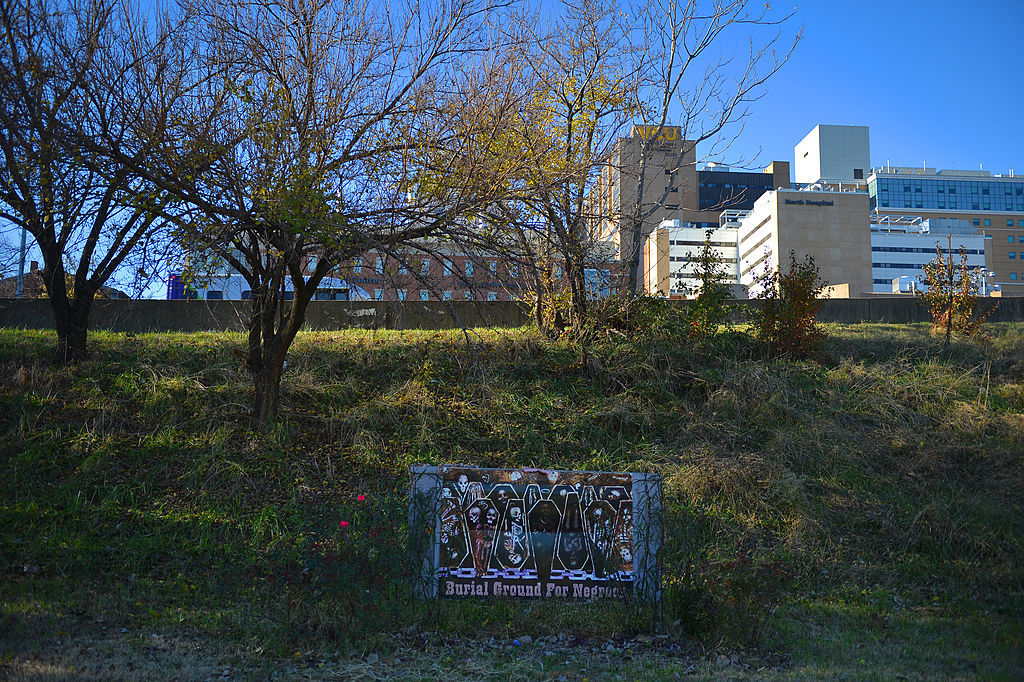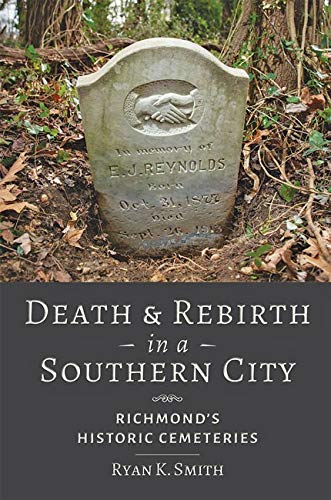
When the internationally renowned preacher John Jasper neared death in 1901, he could look back on a life spent overcoming dire challenges. Born enslaved in Fluvanna County, Va., in 1812, Jasper had become famous for his controversial, fundamentalist sermon on how “The Sun Do Move.” Greater than that frequently delivered sermon, however, was the legacy of his Sixth Mount Zion Baptist Church, which he founded in Richmond, Va., in 1867. He initially gathered that congregation in a horse stable, but by the time of his death he presided over a striking church edifice in the neighborhood of Jackson Ward, sheltering thousands of members plus a steady number of white visitors.
And even in his final words, he foresaw that righteous struggles still remained ahead, as he reputedly stated, “I am waiting at the river, looking across for further orders.” Indeed, a series of challenges still lay in store for his earthly remains and memory, just as they have for African Americans throughout U.S. history. But now, thanks to the work of a coalition of dedicated descendants and volunteers, those challenges are being addressed in a way that may signal a turn.
Upon Jasper’s death, a tremendous assemblage at his funeral on April 4, 1901, was followed by a mile-long procession to his burial site at Richmond’s Sons and Daughters of Ham Cemetery, part of a patchwork of Black-owned burial grounds that surrounded the first such site in the city, founded in 1815. In Virginia’s capital as in other urban locales, public options for Black burials were limited and mostly relegated to rough “potter’s fields” or vulnerable, segregated lowlands. But at the Ham Cemetery, Jasper’s congregation could raise a noble obelisk over his grave, a 20-ft.-high granite shaft that proclaimed his legacy to the world.
Yet just 17 years later, Jasper’s congregation was forced to move his remains to greener pastures in another cemetery.
Get your history fix in one place: sign up for the weekly TIME History newsletter
What prompted the move? In short, developers transformed Richmond’s northside neighborhoods into streetcar suburbs populated by white residents. In the 1890s, James H. Barton’s Northside Development Company advertised larger and less expensive house lots there for city workers, and conflict emerged between the older burial ground associations and the new suburban residents. Despite the heritage of the burial place and the ongoing activity at the site, the neighborhood’s new arrivals acknowledged that they hoped “to have the cemeteries closed.”
Black leaders rallied in response. The burial associations that owned this grouping of cemeteries allied with churches and businesspeople to uphold their operational rights. At one meeting presided over by the African American lawyer Giles B. Jackson, an attendee exclaimed that he owned a section and “would bury in it if he went to jail for it.” But following the incorporation of “Barton Heights” as a town, authorities were able to persuade Virginia’s General Assembly that the cemeteries had become a nuisance and a health hazard. The town was soon authorized to close the site to further burials, being able, in its view, “to relieve itself of the objectionable features of the colored cemeteries overlooking Bacon Quarter Branch,” a nearby stream. It was the latest in a pattern of targeted desecration of Black burial sites, seen earlier in Richmond at the so-called “Burial Ground for Negroes” in Shockoe Valley after 1816 and then again at the second African Burial Ground on Shockoe Hill after 1879.
The city’s threat to disinter all the graves in the Barton Heights cemeteries in 1914 prompted Jasper’s congregation to move his remains and his obelisk to the newly opened Woodland Cemetery, founded in 1917 for African Americans by newspaper editor John Mitchell Jr. There, on a prominent hilltop, Jasper’s followers hoped to find a safer harbor for the noted divine. But that cemetery, too, would suffer from the structural challenges facing burial sites founded by and serving the Black community—including financial difficulties, public disinvestment, vandalism and the dumping of trash on the graves of Black workers, leaders, veterans and family members. By the 1990s, when tennis champion and humanitarian Arthur Ashe chose to be buried alongside his mother’s grave in Woodland, journalists could describe the cemetery as a “dumping ground” with swaths of overgrown forest engulfing whole sections.
Descendants of those buried at Richmond’s Black cemeteries have continually struggled against the conditions at these sites. Among those who have regularly applied their hands at Woodland are Benjamin Ross, church historian at Sixth Mount Zion, and David Harris Sr., brother-in-law of Arthur Ashe; both have regularly brought out their own equipment to tend plots there. Such efforts have found new momentum with the rise of Black political power following the civil rights movement and with the broader willingness of the city and the nation to recognize the dignity and history of Black lives.
At the Barton Heights Cemeteries, a transformation was sparked in the late 1990s with the arrival of Denise Lester, an amateur genealogist who, with the assistance of archivists at the Library of Virginia, traced her roots to the cemetery. Lester organized a campaign on the cemetery’s behalf, worked with the city and a team of allies to clean up the property, and received pledges for regular maintenance. She coordinated the installation of a higher metal fence around the property. She raised funds to have a state highway marker placed at the site to explain its significance. She undertook research and wrote the nomination form to list the property on the National Register of Historical Places. And she held annual commemorative events on the grounds, thereby repopulating the site and reintroducing it to the public. This activity has flagged in recent years, but the grounds remain a place of dignity and rare potential. Today, these cemeteries are part of a network of recovery, championed by a range of organizations such the National Trust for Historic Preservation, Preservation Virginia and even the state’s General Assembly, which recognized the worth of historic Black graves by awarding them annual funding for care beginning in 2018.
At Woodland Cemetery, too, the moment is ripe for change. There, stalwarts like Benjamin Ross and David Harris were joined by Kathleen Harrell, a white schoolteacher who has led weekly volunteer cleanup days at the cemetery since 2018. And in 2020, their work was bolstered by Marvin Harris, a local real estate professional and graduate of the once-segregated Maggie Walker High School, who acquired the cemetery in August. Aided by the county government, his nonprofit Evergreen Restoration Foundation has come together with the volunteers and the families to offer a new vision for not only the resting places of Jasper, Ashe and those surrounding them, but for the city and nation as a whole. “It’s never going back to where it used to be,” Harris told me recently.
“I am waiting at the river,” Jasper’s obelisk proclaims. At these reclaimed cemeteries, whose long sufferings belie the nation’s ideals, we may be seeing one way across.

Ryan K. Smith is the author of Death and Rebirth in a Southern City: Richmond’s Historic Cemeteries, available now from Johns Hopkins University Press.
More Must-Reads From TIME
- The 100 Most Influential People of 2024
- The Revolution of Yulia Navalnaya
- 6 Compliments That Land Every Time
- What's the Deal With the Bitcoin Halving?
- If You're Dating Right Now , You're Brave: Column
- The AI That Could Heal a Divided Internet
- Fallout Is a Brilliant Model for the Future of Video Game Adaptations
- Want Weekly Recs on What to Watch, Read, and More? Sign Up for Worth Your Time
Contact us at letters@time.com